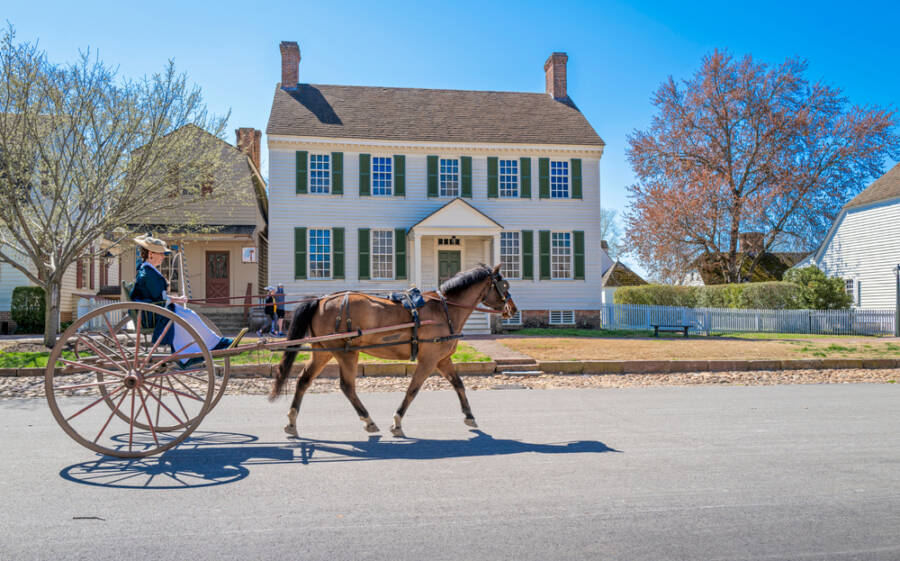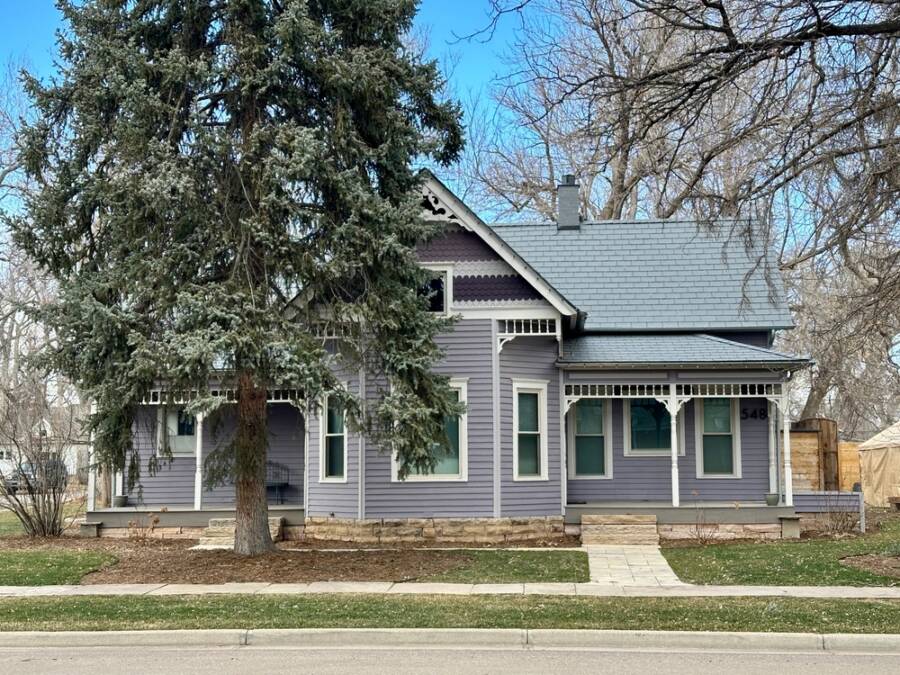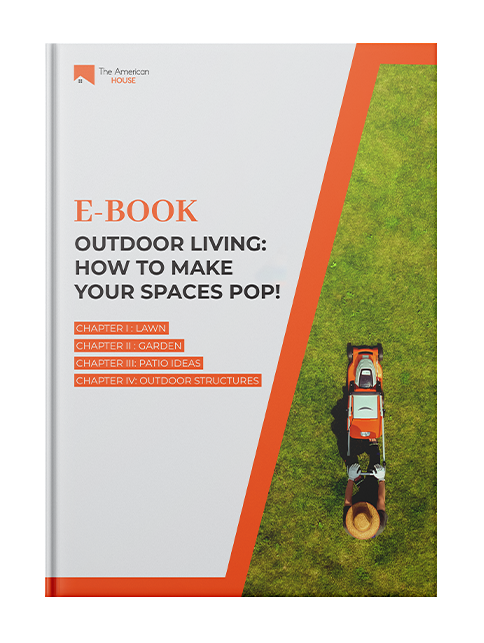Each home style has a specific aesthetic that can be easily accentuated with the right landscaping choices. Some depend on color, sure, while others simply focus on a wide range of vegetation.
If you currently contemplate the types of plants and hardscape design worth installing in your yard, you should consider these recommendations from landscape experts as far as pairing garden styles with house styles go.
Whatever the style you choose to go with, you just note how much maintenance the chosen landscape design will require. Luckily, we managed to draw some parallels to use as a reference, so give it a try:

Colonial House style: formal landscaping
Defined by intricate, triangular roofs and rectangular or even square windows, colonial homes are somehow known to be uncomplicated designs. For this type of home, landscaping can bring simple elegance and classiness to the table, which is the best outcome, in all honesty. “You really don’t want your landscape to be too much, since it will take away from the simple beauty of colonial homes.
You also want to avoid a plain landscape, as it would make the already simple beauty seem more dull,” as Todd Hendricks from Louisville Landscape Pros in Louisville, Kentucky, explained. In fact, formal landscapes are the very best option when it comes to complementing the aesthetic of any colonial home.
They generally focus on predominantly greenery elements, first of all for simplicity, and second of all because they add a certain elegance with their neat, well-maintained shapes. Think hedges, manicured lawns, and even geometric planting beds with absolutely no loose growth.
Eduard Negodenko, a well-known landscape expert and gardener at Avanti Landscaping in Toronto, Canada, highly recommends boxwoods, holly, as well as azaleas to make wonderful edges and structures.
As far as hardscapes go, you should definitely opt for a straight pathway made entirely from pavers, brick, and gravel. Maybe they can also be accompanied by evenly spaced plantings, like roses and flowering perennials.
You also have to make sure everything is as neat and clean as possible, with no loose or wild elements. Doing so is probably the hardest part of any formal landscape; it’s normal. To keep up with the neat appearance you’re trying to catch, we advise you to trim vegetation often.
Adobe house style: modern southwestern landscape
Adobe homes, and their whimsical, earth tones, with flat roofs and rounded edges, are in dire need of a Southwestern garden. Clay Tully, a renowned landscape architect and contractor at Clay Tully Landscape Architecture in California, highly advises installing modern concrete pathways and concrete floating pads with gravel, stone, or even decomposed granite joints.
Steel planters and terraced retaining walls fit just as well, along with decorative rock and gravel mulch, and well-placed boulders”. For proper planting schematics, what you want is to keep it as simple and low maintenance as possible, using mass planting of hardy succulents and tough plants that could withstand neglect as well as harsh temperatures.
Moreover, Negodenko would advise incorporating xeriscaping with some drought-tolerant plants such as yucca and agave for adobe-style homes. He also mentioned that cactus is a wonderful desert plant, which “bears quite a striking architectural quality when added to the landscape.”
He also strives for a water conservation design for the garden, employing much-needed drip-line irrigation and grouping plants with similar watering requirements. An adobe garden doesn’t need much, just the smallest amount of maintenance, the occasional check on the irrigation system, and the occasional trimming of overgrown plants that would keep its pristine look.
Cape Cod House style: coastal landscaping
Cape Cod homes represent the classic North American house, with their petite size, simple design, and pitched roof; a central chimney where Santa can leave presents on Christmas, and a symmetrical facade on the front of the house.
For Cape Cod homes, particularly, Negodenko prefers using coastal plants such as hydrangea, roses, and lavender. “Not only do they put on a colorful and fragrant show, but they also grow very nicely in the temperate climate that New England has to offer.” Well, as a coastal landscaper, he mainly focuses on planting salt-tolerant plants that can flourish within a good drainage system. This way, the landscape isn’t waterlogged.
As far as maintenance goes, he suggested pruning on a regular basis, especially if there are hydrangeas and roses. This way, their shape is well-kept, and it prevents them from overgrowing. Moreover, the use of low-maintenance ground cover such as creeping thyme effectively reduces the upkeep needed while also providing a soft, natural look.
Log Cabin House Style: rustic landscaping
For log cabins, a natural rustic look works very well. Negodenko advises integrating the design of the garden with the wilderness surrounding it. The idea is to aim to find native wildflowers, conifers such as pines and firs, and hardy shrubs.
In fact, the rustic charms of a “cabin” garden also mean letting a few patches remain wild, while regular maintenance will keep the wild ones from taking complete control. Also, it’s worth mentioning that seasonal cleanup is probably one of the most important maintenance practices for the cabin garden. You should also strive to clear fallen leaves, cut back dead plants, and keep pathways free from plants and litter.
Modern farmhouse style: farmhouse landscaping
The landscaping revolving around farmhouse-style homes should definitely match their vision. Even if, so far, there isn’t an official term for this particular look, Hedrick strongly believes that landscapes refer to it as farmhouse landscaping. You can stick with rustic materials and elements, then keep everything plain and simple.
He also suggested incorporating an edible garden, since they fit quite well with the farm vibe. While Negodenko is a huge fan of incorporating raised garden beds on the property, filled with tomatoes, herbs, and lettuce, there is thing as too much, too soon.
Planting specific citrus and other types of fruit trees is a better addition, if you ask us. You can use flower beds to efficiently showcase clusters of flowering perennials and evergreen shrubs, as well as ornamental grasses.
As far as landscape elements go, Negodenko calls for emphasizing concrete and metal, like steel planters. The secret here is to keep things as simple as possible and try not to overdo it with the landscape layout.
When it comes to maintenance, focus on soil health and drainage through the amendment of the soil with some organic compost. This way, you allow the plants to spend the entire year thriving, rotation of crops becomes much easier, which also means that soil depletion is prevented.
Teal- the color of the year
According to Garden Media Group, teal is bound to be the color of the year. First, it’s quite bold, and it has a synthetic quality that effectively “bridges the realms of fantasy and reality,” evoking the deep, serene blues of Caribbean waters, as well as the expansiveness of skies.
It also aligns with ongoing wellness trends, since it offers a calming effect that’s both sophisticated and soothing. Ultimately, the color helps address a certain sense of tech nostalgia. There’s way more about this color than meets the eye, evoking a powerful nostalgia for the vibrant and carefree spirit of the 1990s and early 2000s.
If you found this article useful, we also recommend checking: Plants You Should Never Grow Together: 8 Terrible Combinations!





